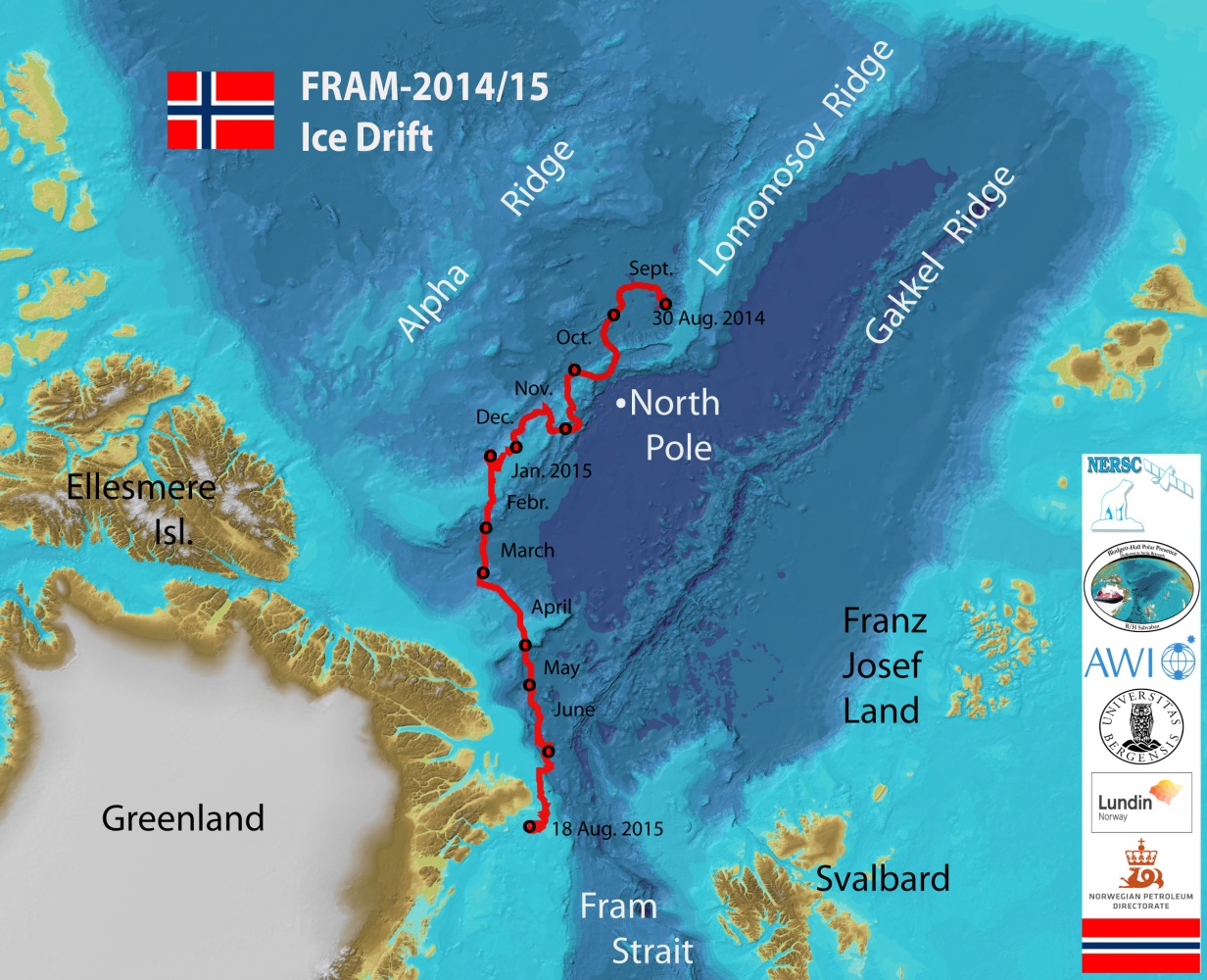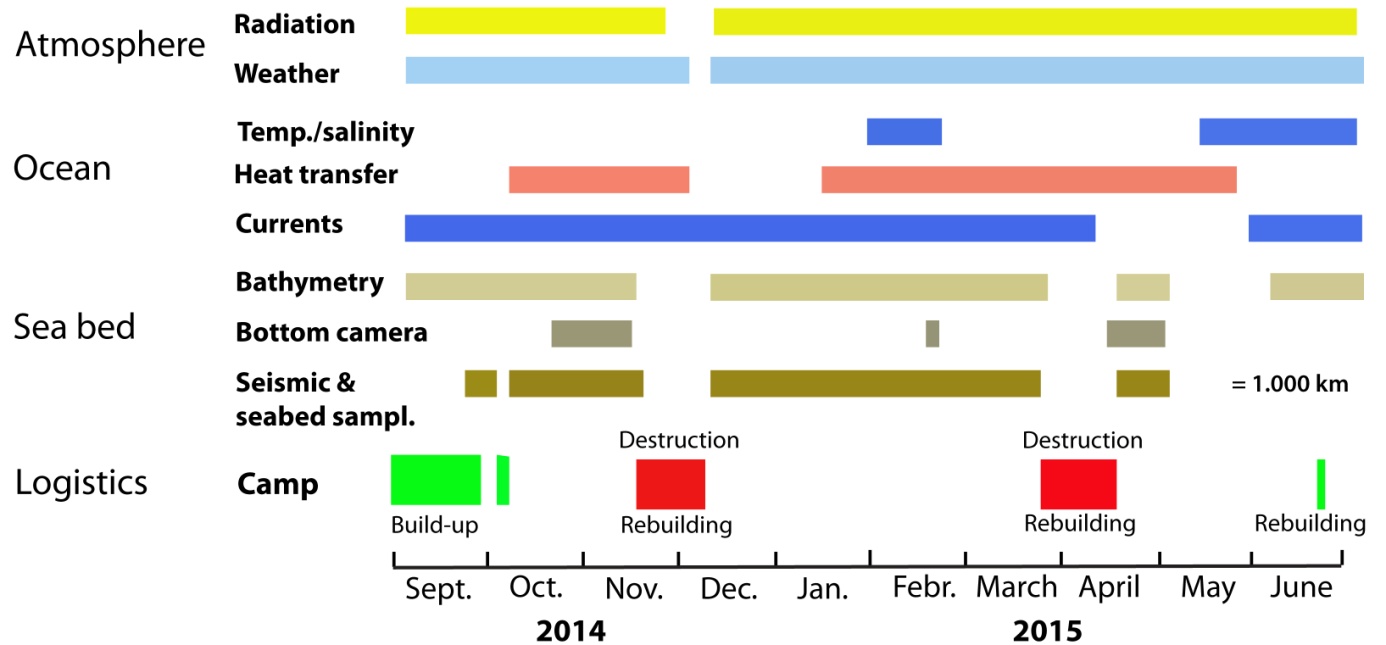You are here
Ice drift station FRAM-2014/15 summary

Why ice drift stations?
An ice drift station is a logistic alternative to:
- explore areas of the Arctic Ocean not accessible to icebreakers,
- carry out scientific field experiments which cover the full annual cycle and requires physical presence.
FRAM-2014/15 was an ice drift station using a medium-sized hovercraft as logistic and scientific platform operated by a crew of two persons. The hovercraft was equipped as a scaled-down modern research vessel. Work space for geologic and oceanographic work was set up on the ice separately. The station was deployed on first year ice from icebreaker Polarstern on 30 Aug. 2014 in the Makarov Basin, upstream of the target, the Lomonosov Ridge (Fig. 1). The drift during the next 12 months covered over 1.900 km with scientific data acquisition and includes an unprecedented five complete crossings of Lomonosov Ridge. The drift during November through April were in a part of the Arctic Ocean not accessed by diesel driven icebreakers unless assisted by a nuclear icebreaking vessel. The expedition was recovered by the sealing vessel Havsel at 81° N on 18 Aug. 2015.

Fig. 1 The drift track of FRAM-2014/15 (red line)

Fig. 2 Summary of science programs and camp logistics during the ice drift
The main science objective of the ice drift was to obtain geologic information which relates the geologic evolution and the paleoenvironment of the the polar continental margin of Europe prior to about 56 million years ago, now represented by the Lomonosov Ridge. The primary tools were seismic reflection measurements and short sediment cores from key locations (Fig. 2). Additional programs included measurements of incoming and outgoing radiation at the ice surface (Met.no), local weather (Univ. of Bergen), transfer of heat from the water to the underside of the ice (Univ. of Bergen), measurement of deep contour following currents (Univ. of Bergen), temperature and salinity measurements (Univ. of Bergen, Univ. of Århus), short sediment cores for studies of the presence of sea ice during past warm climate periods (Nordic Centers of Excellence), and bottom camera to explore life on the sea bed.
A logistic objective was to explore the use of hovercraft as a platform for a drifting ice station where camp mobility and a lean operation are a way to reduce the impact of destructive sea ice activity.
FRAM-2014/15 ice drift:
Total duration: 353 days
Total science days: 303
Total drift: 2.200 km
Data acquisition: 1.900 km
Final budget: NOK. 5.1 million (Euro 625 k)
Fuel consumption: 15.000 liter
Responsible institution:
Nansen Environmental and Remote Sensing Centre, Bergen, Norway
Cooperating partners:
A. Wegener Institute for Polar and Marine Research, Germany (deployment)
University of Bergen, Bergen, Norway
Field support:
Norwegian Air Force, 333 Squadron (two support missions)
Danish Air Force (air drop and photography)
Sponsors:
Blodgett-Hall Polar Presence LLT
Lundin Norway
Norwegian Petroleum Directorate

